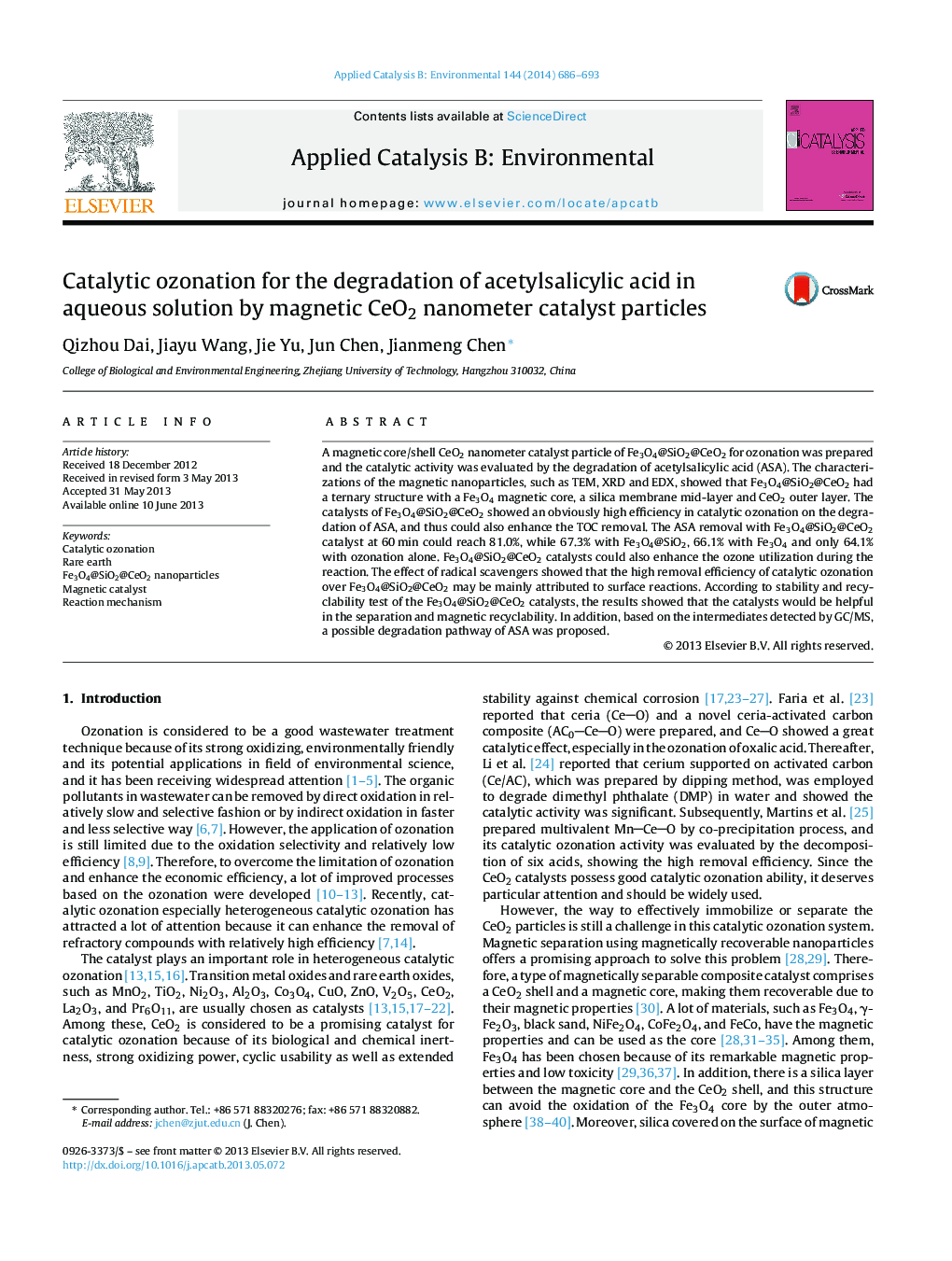| Article ID | Journal | Published Year | Pages | File Type |
|---|---|---|---|---|
| 45407 | Applied Catalysis B: Environmental | 2014 | 8 Pages |
•A magnetic Fe3O4@SiO2@CeO2 catalyst with the core/shell structure was prepared.•Typical rare earth was introduced in catalytic ozonation for acetylsalicylic acid (ASA) degradation.•The reaction mechanism develops mainly through surface reactions.•A possible degradation pathway of ASA by catalytic ozonation was proposed.
A magnetic core/shell CeO2 nanometer catalyst particle of Fe3O4@SiO2@CeO2 for ozonation was prepared and the catalytic activity was evaluated by the degradation of acetylsalicylic acid (ASA). The characterizations of the magnetic nanoparticles, such as TEM, XRD and EDX, showed that Fe3O4@SiO2@CeO2 had a ternary structure with a Fe3O4 magnetic core, a silica membrane mid-layer and CeO2 outer layer. The catalysts of Fe3O4@SiO2@CeO2 showed an obviously high efficiency in catalytic ozonation on the degradation of ASA, and thus could also enhance the TOC removal. The ASA removal with Fe3O4@SiO2@CeO2 catalyst at 60 min could reach 81.0%, while 67.3% with Fe3O4@SiO2, 66.1% with Fe3O4 and only 64.1% with ozonation alone. Fe3O4@SiO2@CeO2 catalysts could also enhance the ozone utilization during the reaction. The effect of radical scavengers showed that the high removal efficiency of catalytic ozonation over Fe3O4@SiO2@CeO2 may be mainly attributed to surface reactions. According to stability and recyclability test of the Fe3O4@SiO2@CeO2 catalysts, the results showed that the catalysts would be helpful in the separation and magnetic recyclability. In addition, based on the intermediates detected by GC/MS, a possible degradation pathway of ASA was proposed.
Graphical abstractFigure optionsDownload full-size imageDownload as PowerPoint slide
